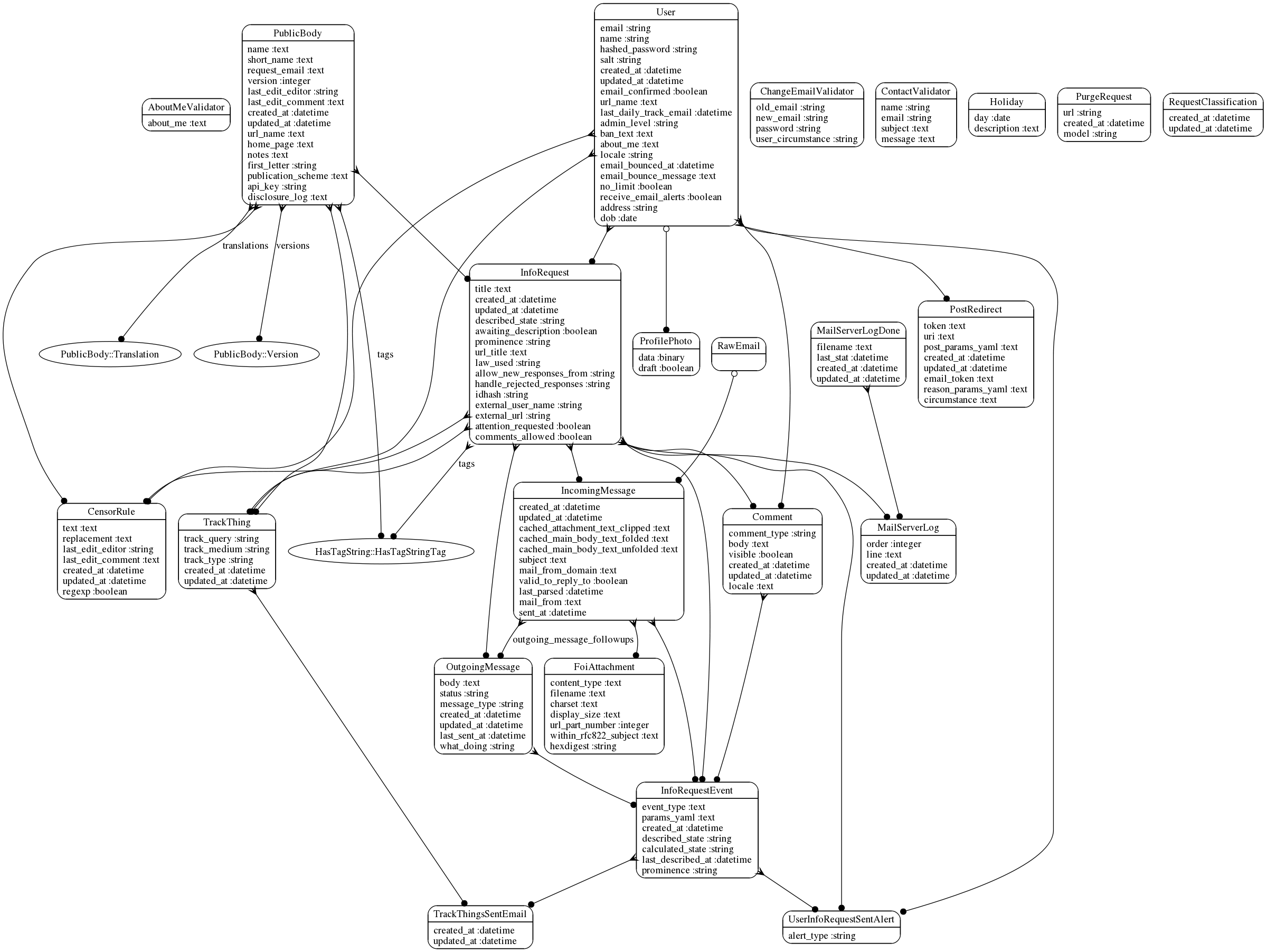High-level overview
This page describes the process and entities that make up Alaveteli. It's a high-level overview of how Alaveteli works to help you orientate yourself to the code.
See also the schema diagram at the bottom of this page.
The main entity is InfoRequest, which represents a request for information by a User to a PublicBody. A new InfoRequest results in an initial OutgoingMessage, which represents the initial email.
Once an InfoRequest is made, its state is tracked using InfoRequestEvents. For
example, a new InfoRequest has an initial state of awaiting_response and an
associated InfoRequestEvent of type initial_request. An InfoRequest event can
have an OutgoingMessage or an IncomingMessage or neither associated with it.
Replies are received by the system by piping raw emails (represented by a RawEmail)
from the MTA to a script at script/mailin. This parses the email, tries to identify the
associated InfoRequest, and then generates an IncomingMessage which references
both the RawEmail and the InfoRequest.
Any User can make Comments on InfoRequests.
All events (e.g., Comments, OutgoingMessages) are tracked in InfoRequestEvent.
A TrackThing is a canned search that allows users to be alerted when events matching their criteria are found. (How this worked changed after we’d launched, so there’s still some deprecated code there for things we’ve phased out.)
The MailServerLog is a representation of the parsed MTA log files.
MailServerLog entries are created by a cron job that runs
script/load-mail-server-logs. This checks incoming emails and matches them
to InfoRequests; then script/check-recent-requests-send checkes these logs to
ensure they have an envelope-from header set (to combat spam).
Schema diagram
This schema for the Rails models was generated from the code on 19 Dec 2012 using Railroad.
The railroad command is: railroad -M | dot -Tpng > railsmodels.png
